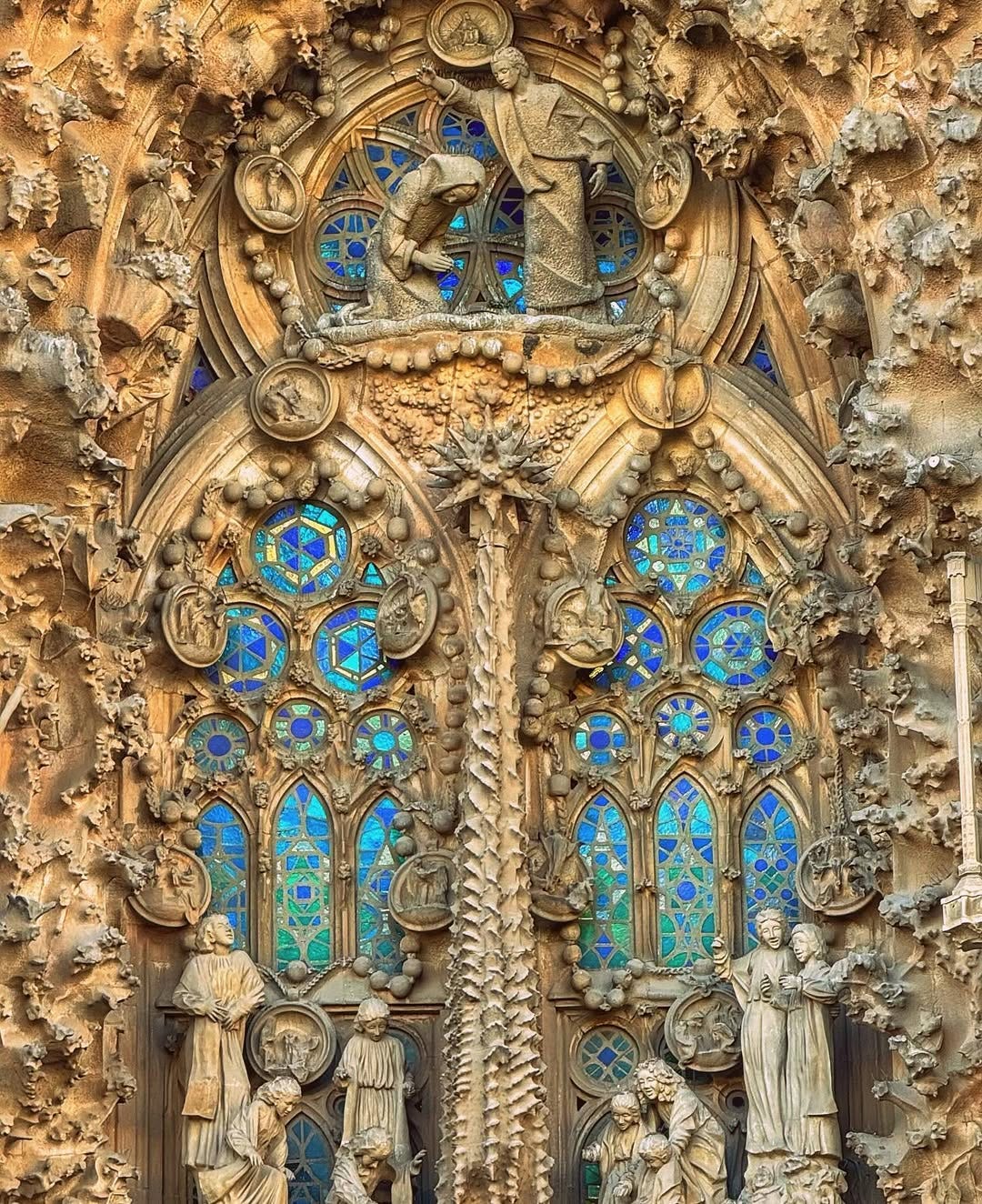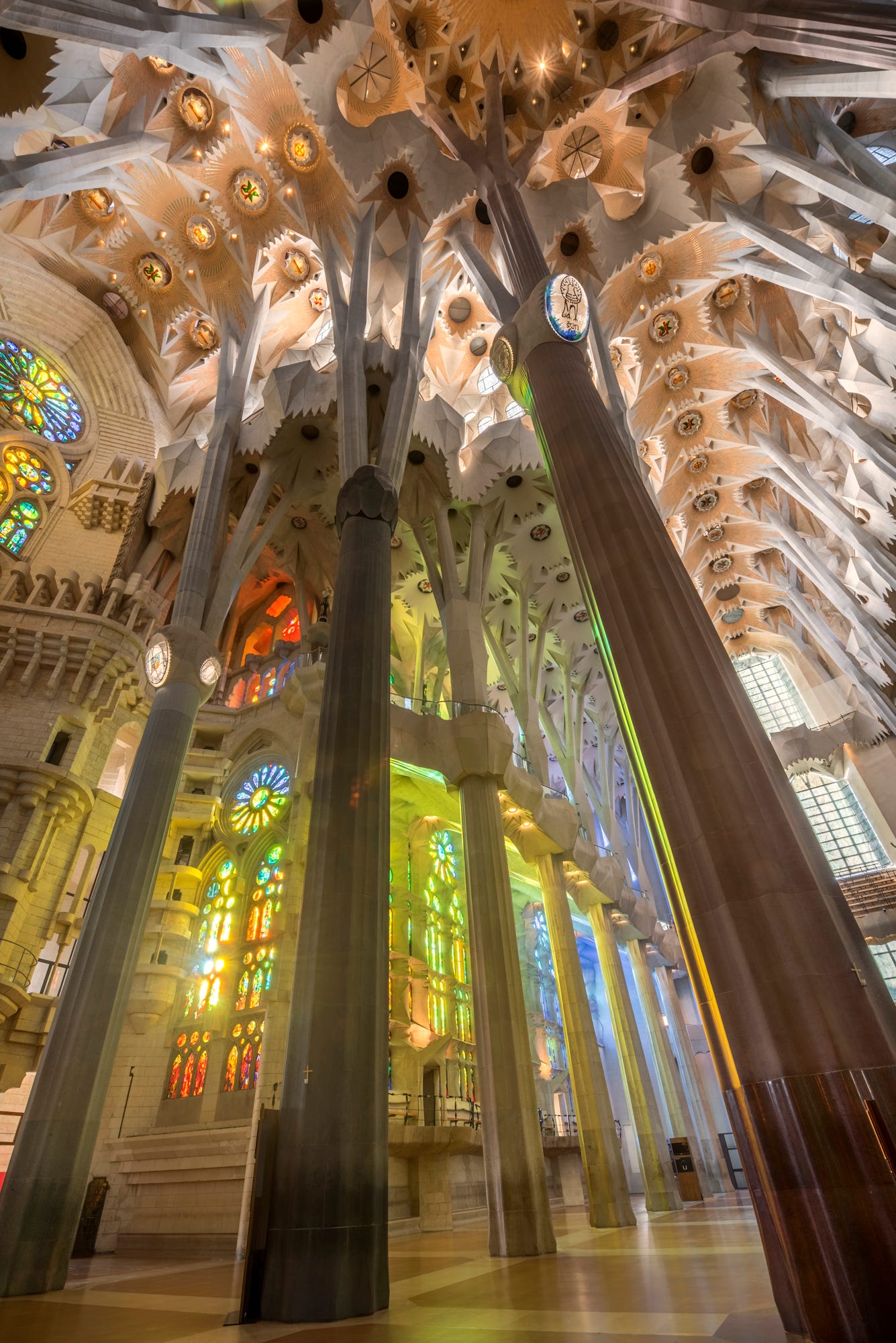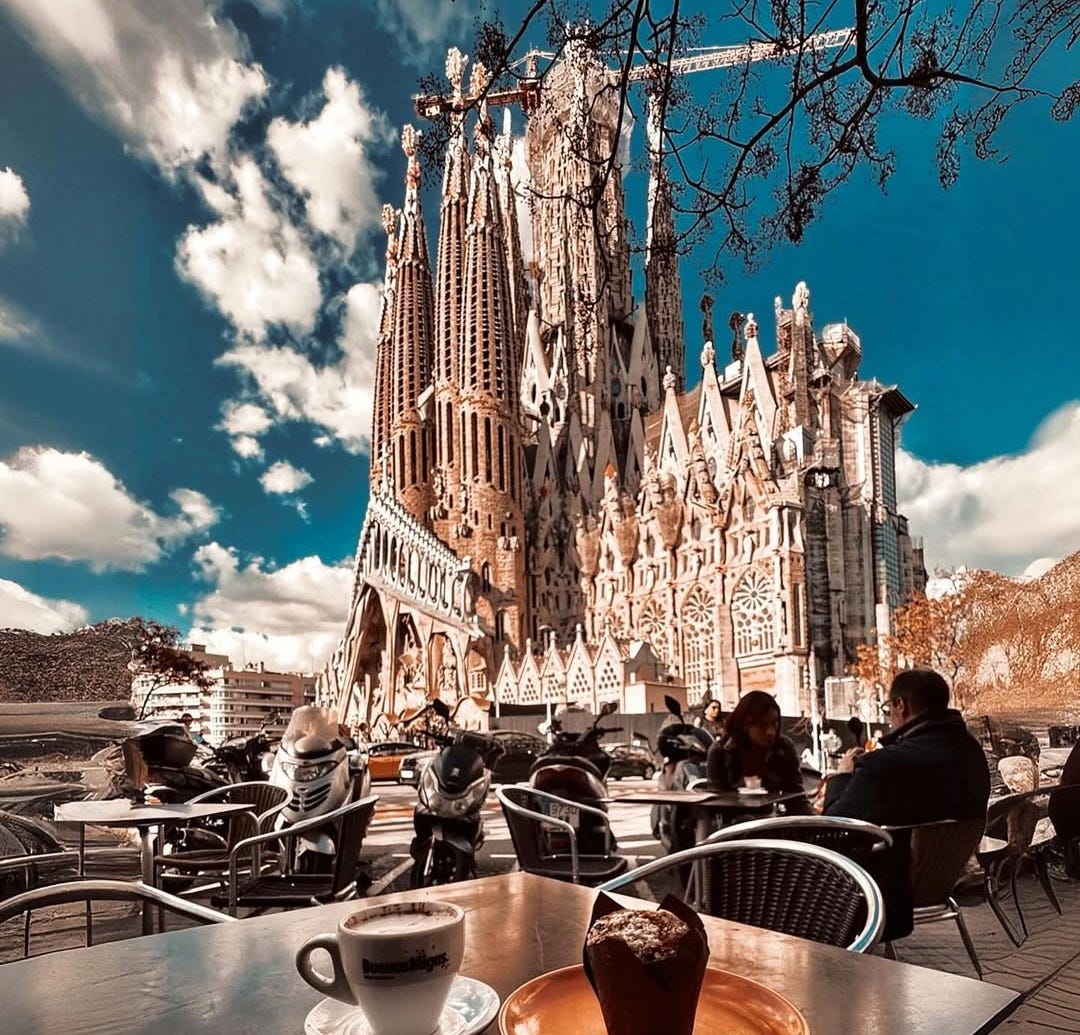140 Years in the Making: The Church That Still Isn’t Finished
Barcelona, Spain – Sagrada Família
Step off the bustling streets of Barcelona, and you’ll spot it long before you arrive. Spires rising like stone flames into the Catalonian sky. Carvings of saints and serpents. A slow, reverent hush falling over tourists and locals alike.
This is the Basílica de la Sagrada Família, one of the most remarkable buildings in the world and one that, after nearly 150 years of construction, still isn’t finished.
But don’t let that fool you.
The Sagrada Família may be a work in progress, but it’s already a masterpiece.
A living testament to what happens when faith, art, and time collide.
A Vision Born in Humble Beginnings
The story begins in 1882, not with Gaudí, but with a different architect named Francisco de Paula del Villar. His original plans called for a fairly standard neo-gothic church, a style that was popular and predictable. But when he stepped away from the project just a year later, a young architect named Antoni Gaudí took the reins.
What Gaudí did next was nothing short of revolutionary.
Rather than follow the formulas of his time, Gaudí reached into the natural world for inspiration. He believed that God's design was already perfect, found in the trees, in the honeycombs of bees, and in the curvature of mountains and waves. Why shouldn’t a church reflect that same harmony?
He redesigned the entire project, blending Gothic verticality with flowing organic forms, mathematical precision, and bold symbolic storytelling. He even developed new architectural techniques, such as tilted columns and hyperboloid vaults, to support his vision.
What began as a parish church quickly became something greater and turned into his own personal mission. A devotion not only to God but to the transcendent power of beauty.
A Life’s Work, Left Unfinished
By the time Gaudí died tragically in 1926 (hit by a streetcar), less than a quarter of the basilica was complete. At that point, he had been working on it for more than 40 years. In fact, he had dedicated the final 12 years of his life entirely to it by living on-site in a small workshop and even accepting donations from passersby to keep the construction going.
He knew he wouldn’t finish it in his lifetime.
“My client,” he once said, “is not in a hurry.”
That client, of course, being God.
Over the decades, the Sagrada Família faced delays from war, economic hardship, and political uncertainty. Parts of Gaudí’s original plans were destroyed during the Spanish Civil War. Yet the project endured thanks to a dedicated team of architects, historians, and artists who have continued to interpret his vision using a mix of surviving models, notes, and evolving technologies.
Today, computer modeling, 3D printing, and precision stone-cutting are helping make what Gaudí only dreamed of a physical reality.
The current target for structural completion is 2026, marking the 100th anniversary of Gaudí’s death. Decorative sculptural work will likely continue into the early 2030s.
Why It Matters
The Sagrada Família isn’t just a place of worship. It’s a reminder of what’s possible when imagination and faith are allowed to soar.
Architecturally, it marks a seismic shift. Gaudí broke free from centuries of tradition to create something entirely new by fusing Gothic bones with Art Nouveau curves and biomimetic design. The building looks less like it was built and more like it grew out of the ground itself. There are few places in Europe or anywhere that feel quite as alive.
Culturally, it’s an anchor. During the Franco dictatorship, Catalonia’s language, art, and customs were suppressed. Yet here stood the Sagrada Família, quietly and defiantly Catalan as a symbol of identity that refused to be erased.
Spiritually, it’s something more. Whether you’re devout or secular, stepping inside the basilica is a sacred experience. Gaudí designed it so that sunlight pours through stained-glass windows like divine fire. The towering columns branch out like trees, giving the impression you’re standing in a stone forest designed by heaven. It’s a space that hushes you. That invites awe.
And practically speaking, it’s a marvel of human determination. Few architectural projects in history have taken this long, required this much collaboration, or held such a clear, consistent vision over more than a century of change. In an age of instant gratification, the Sagrada Família reminds us that some things are worth waiting for and that beauty isn’t always efficient.
Why You Should Visit
No photo can prepare you for the moment you step through its doors.
You’ll crane your neck to take in the surreal geometry of the ceiling, marvel at the richly symbolic façades, and realize that this is architecture as sacred storytelling. Each façade tells a different chapter, depicting the birth, death, and resurrection of Christ through intricate carvings that look like they’ve been sculpted by wind and time.
Don’t rush. Sit for a while. Listen to the organ echo off the soaring vaults. Watch as sunlight shifts across the nave, painting the walls in blues, reds, and golds. You’ll feel as if you’re inside a living church, breathing and glowing with its own kind of light.
And before you leave, walk around the outside. The church is being completed in phases, with several of the final towers, including the massive central tower of Jesus, still under construction. You’ll see scaffolding. Cranes. Workers moving stone into place. It’s all part of the experience. You are witnessing history in the making.
Even if the final date slips, the delay is part of the charm. The Sagrada Família has never been in a hurry. It was never meant to be.
Because this isn’t just a church.
It’s a vision carved in stone. A city’s soul made visible. A place where art, time, and faith all come together, one sculpture, one arch, and one quiet beam of sunlight at a time.
Practical Tips for Visitors
Book your tickets ahead of time, especially in spring or summer, when time slots often sell out days in advance. Purchase online through the official website to avoid long queues and guarantee your preferred entry time.
Arrive early or late in the day to beat the crowds and experience the basilica in peace. The soft morning light filters through the Nativity façade, while late afternoon sunlight ignites the Passion side and turns the stained glass into molten color.
Plan around golden hour if you’re taking photos inside — the interior glows between 5 and 6 p.m., with beams of light moving across the columns like shifting stained-glass waterfalls.
Use the metro for ease — Lines L2 (purple) and L5 (blue) stop right at Sagrada Família. The exit places you directly in front of the basilica.
Spend time both inside and out. Many visitors rush through the interior and miss the outer façades, each of which tells an entire biblical story through carvings. Walk the full perimeter to take it all in.
Consider adding tower access to your ticket for aerial views over Barcelona — just note that access is by elevator up, stairs down, and may close in bad weather.
Don’t forget to look down as well as up. The floor reflects the movement of light and is often overlooked, but changes color throughout the day.
Dress comfortably and respectfully. While there’s no strict dress code, it is an active place of worship, so modest clothing is encouraged. Wear good shoes — you'll be walking and standing a lot.
Combine your visit with a stroll through Eixample or a picnic in nearby Plaça de Gaudí. The area around the basilica is vibrant, with cafes, tree-lined boulevards, and a slower pace than the Gothic Quarter






What a stunning tribute to human creativity and patience this article is. Reading it, I couldn’t help but think that the Sagrada Família isn’t merely architecture — it’s a philosophy rendered in stone. It asks us to slow down, to imagine, to dream beyond our own lifetimes. In a world obsessed with speed and completion, Gaudí’s masterpiece reminds us that beauty doesn’t always conform to a deadline and that faith — whether in God, in art, or in the human spirit — often requires us to work for things we may never fully see finished ourselves.
What strikes me most is how it embodies both the impermanence and the endurance of human endeavour: wars, politics, centuries of change — and yet this living, breathing cathedral continues to rise. It’s as if time itself has become one of its builders.
Perhaps that’s the greatest lesson the Sagrada Família offers us: that some dreams are so vast, so transcendent, they need generations to tell their story.
It will blow your mind when you experience it!
Also visit the basement museum!